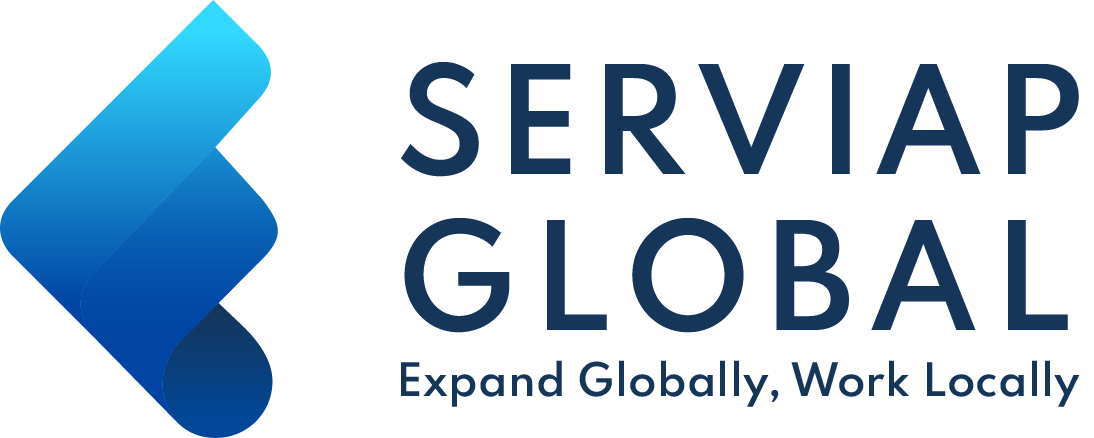Table of Contents
Outsourcing is a familiar term to many business owners, but nearshore outsourcing is relatively new. Essentially, nearshoring accomplishes the same thing as traditional outsourcing does. It allows companies to save money and gain efficiency by partnering with companies across the globe to take on certain functions of the company. But what exactly is nearshore outsourcing, and why should you consider it for your business? Here’s everything you need to know.
SERVIAP can help with your global expansion needs. Contact us today to learn how you can expand your business with PEO in South America and Latin America.
What is Nearshore Outsourcing?
Like traditional outsourcing, nearshoring involves outsourcing various processes of a business to companies in other countries. It is typically used in the technology field, most popularly for call centers and IT functions.
The big difference between nearshoring and traditional outsourcing is the distance between the two companies. As the name implies, nearshoring involves enlisting the services of an outsourcing company in a nearby country.
In some cases, the outsourcing country may share a border with the company’s main base—or it might be relatively close by. In the United States, for example, a nearshore outsourcing company could be located in Mexico, Latin America or South America. Hiring a company in India or China, by contrast, would be considered traditional outsourcing or “offshoring.”
Benefits of Nearshore Outsourcing
There are many benefits that can be realized by hiring a nearshore outsourcing company, including:
Similar Time Zones
When companies nearshore outsource, they are often hiring a company that is in a similar time zone to where they operate. For instance, many parts of Latin America and South America have the same or only slightly different time zones as the U.S.
This means that normal business hours are traditionally the same, making it easier for the hiring company to communicate with the employees of the nearshore company. This increases efficiency in operations, which can lead to huge cost-savings and less headaches adjusting to time.
Easier to Visit
As nearshoring countries are located closer to the hiring company, this allows for easier travel between the two locations. The nearshore company can host its clients for on-site visits, on-site trainings, and in-person collaboration meetings.
The proximity and ease of visiting a nearshoring site can provide the hiring company with an opportunity for more direct oversight and process control over their products and services while reducing costs associated with travel—compared to offshoring.
Lower Charges for Duties & Customs
When goods and services travel between two countries’ borders, the importing company often has to pay duties and customs fees. The longer these things travel, the more they are typically charged.
When you opt for nearshore outsourcing, you can cut down on these costs, which can otherwise add up quickly. This may not be a major concern for companies that are outsourcing only services such as IT compared to manufacturing, but it’s still an important consideration.
Language & Cultural Similarities
Another major benefit of nearshoring is the cultural similarities between the two countries. The culture of Latin American and South American countries compared to the U.S. can be quite different in certain aspects. But, at the same time, there are many similarities between them—and less cultural disparities than, say, between the U.S. and China.
Cultural similarities are very important when it comes to communicating between your employees and those of the nearshore outsourcing company. The more these two groups can relate, the better they’ll be able to communicate and work together.
Countries located close to the U.S. are also more likely to speak English fluently. English is being taught at increasingly-high levels in all Latin and South American countries from a young age.
Continuation of Technology
In today’s digital world, it’s essential that digital disruptions are kept to a minimum. This is especially important when you’re dealing with an outsourcing company to handle essential functions at your company.
With nearshore outsourcing, you’ll be reducing the potential for digital disruption, because you can outsource services to a country that has solid technology infrastructure.
The outsourcing company you hire will only be good for you if they are up and running consistently. Nearshoring can increase your chances of working with a company that has reliable technology infrastructure, compared to outsourcing to a company located in more remote parts across the world.
The best reason for IT nearshoring
The primary advantage of IT nearshoring is cost-efficiency while maintaining or even improving quality and access to a skilled workforce. By nearshoring, companies can access technical talent at a lower cost than hiring domestically, as well as reducing language and cultural differences. Furthermore, this strategy enables for better coordination and collaboration between the company and its IT team and eases the management of their progress and workflow.
Expand Your Business
SERVIAP is a leading Professional Employer Organization (PEO) ready to help your business expand operations throughout the Western Hemisphere. PEO is a model of co-employment, where we assume total responsibility for your talent, allowing you to focus on the strategic activities of your organization. Contact us today to learn more about how you can expand your business in South America and Latin America.










